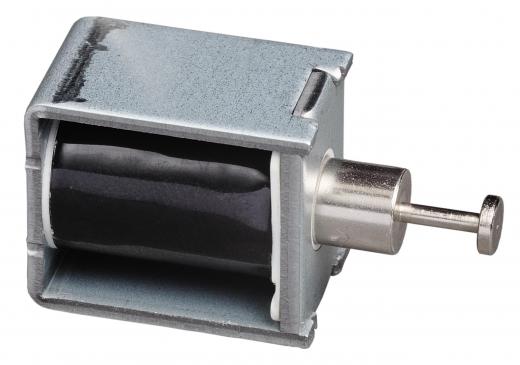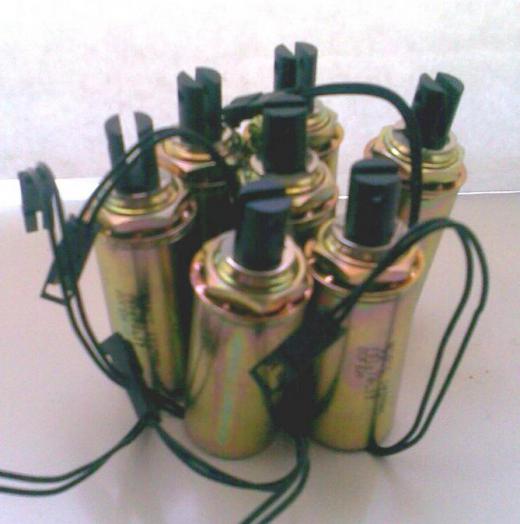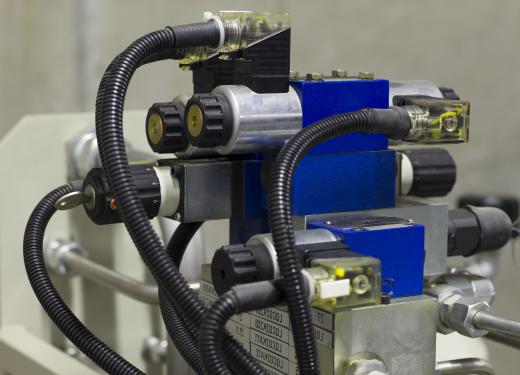A solenoid is a device that converts energy into linear motion. This energy may come from an electromagnetic field, a pneumatic (air-powered) chamber, or a hydraulic (fluid-filled) cylinder. These devices are commonly found in electric bell assemblies, automotive starter systems, industrial air hammers, and many other machines that rely on a sudden burst of power to move a specific part.
In order to understand the underlying principle, a person can examine a typical pinball machine. At the beginning of play, a steel ball rests on a rubber-tipped plunger that is held in place by a compression spring, which means it has no energy to move the ball when at rest. The player's hand provides additional energy as the plunger assembly is pulled back. Upon release, the spring forces almost all of the plunger pin's kinetic energy on a small area of the steel ball. The ball is flung into the playing field and the pinball game begins. This manual plunger is a rudimentary example of a solenoid.

The difficulty with using manual pinball plungers on other machines is that someone must constantly pull the spring back and release the energy by hand. An improved solenoid would provide its own means of pulling back on the pin and releasing it under control. This is the principle behind a simple electric one, in which a metallic cylinder acts as the "plunger."

A compression spring holds this metal pin partially out of an electromagnetic housing. When power from a battery or electric generator flows around the electromagnet, the metal pin or cylinder is magnetically drawn inside the housing, much like the player's hand pulls the plunger back in the pinball example. When the electric current stops, the pin is released and the compression spring sends it forward with significant force. The pin may strike the inside of a bell or forcefully eject a part from a molding machine. Many electronic machines contain numerous solenoids.

Other types depend on compressed air for their power. A single piston may be placed in an airtight cylinder connected to a source of highly-compressed air. A strong internal spring may hold the piston in place until the air pressure has reached a predetermined level and then the piston is released. The compressed air is allowed to escape as the piston drives forward.
Because the energy released by a solenoid can be concentrated, pneumatic ones are popular for heavy tools and machining applications which require substantial power. A jackhammer is a good example of this type in action. The central piston is driven by air into the concrete, then the recoil of the hammer returns the piston to its original position.
An even more powerful solenoid uses hydraulics as its source of power. The piston or pin is seated in a cylinder filled with a hydraulic fluid. As this hydraulic fluid fills the cylinder, everything is pushed forward, including the piston or pin. As the piston travels towards a piece of metal or other target, the fluid buildup becomes very resistant to compression, and the piston will concentrate all of the cylinder's energy on whatever it encounters, even the heaviest titanium.
When the solenoid has released all of its energy, the hydraulic fluid drains out of the chamber and the piston is drawn back to its original position. This action can take place in a matter of seconds. This type is so powerful that it is generally used only for the heaviest projects. Wave pools use them to release the giant stoppers at the bottom of their holding tanks. Aircraft manufacturers use this type to bend titanium and other heavy metals.

